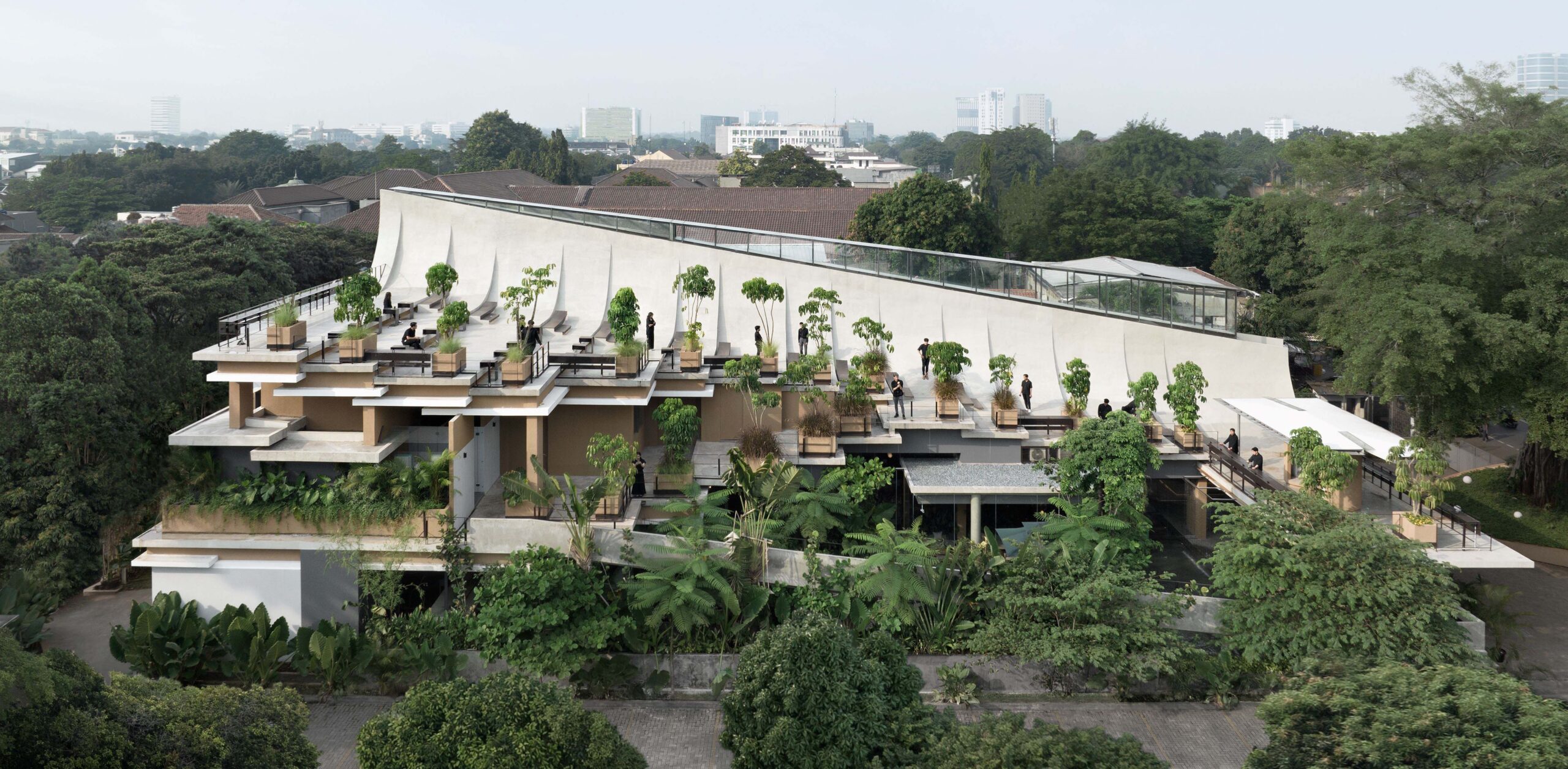Fahrenheit 180 shows tiles made from oyster shells at Lisbon's Gulbenkian art museum


Design collective Fahrenheit 180 has created tiles using discarded shells from oyster farms to show the "potential of overlooked materials".
The tiles are currently on show in the garden of Lisbon museum Centro de Arte Moderna Gulbenkian as part of the From Tagus to the Tile exhibition – named for the Tagus river region where the oyster shells were sourced.

"The project was inspired by oysters and their deep-rooted heritage in the Tagus River bioregion," Fahrenheit 180 co-founder Luca Carlisle told Dezeen. "Once home to the largest natural oyster bank in Europe, the river has suffered from industrial degradation."
"By making tiles – or azulejos – we're linking this local biomaterial with Portugal's cultural traditions, creating a material story grounded in place and memory," he added.

The tiles were designed as part of a project called À flor do azulejo, a cor do Tejo, with the aim of prototyping materials for use in public spaces.
Fahrenheit 180 sources the oyster shells from oyster farms, which would otherwise have sent them to landfills.

"We began by collecting shells from nearby seafood restaurants, though adjusting kitchen habits of separating the shells from general waste made consistent sourcing a challenge,'' Fahrenheit 180 co-founder Jeremy Morris told Dezeen.
"Eventually, we turned to oyster farms, where large quantities of discarded shells accumulate in waste piles. By reclaiming this overlooked byproduct, we diverted a small fraction from ending up in landfills."

The studio begins by washing and sterilising the shells using a combination of water and heat.
"Once cleaned, they're ground and sieved into different aggregate sizes, then mixed with alginate – a seaweed-based biopolymer – and water to form a moldable putty," Carlisle said.
"After air-drying and curing, the tiles can be cut, shaped and sanded," he added. "We also experimented with biomaterial polishes and glazes."
The From Tagus to the Tile exhibition shows tiles in a variety of colours, from marbled blue-and-white to oranges and yellows.

Carlisle and Morris initially dyed the material using biopigments from the region to reflect the local ecosystem, but these were UV-sensitive and would fade after a few days of sun exposure.
"As a result, we also used mineral pigments to enhance the palette while maintaining a connection to natural sources," Morris said. "The long line of tiles showcases the various bio and mineral pigments we've used."

By showing the exhibition at the Centro de Arte Moderna Gulbenkian, the design collective hopes to help people rethink local resources as well as craft traditions, with tiles being one of Portugal's best-known traditional crafts.
"We hope people see the potential of overlooked materials like shells and seaweed, not just as waste, but as rich, living matter that can shape culture," Fahrenheit 180 concluded.
"The installation invites a rethinking of local resources, craft traditions, and our relationship to ecological cycles."
Oyster shells have been used for a number of materials projects featured on Dezeen, including erosion mitigation units and underwater urns.
The photography is by Bruno Lopes, courtesy of the Calouste Gulbenkian Foundation.
From Tagus to the Tile is on show at Gulbenkian's South Garden from 12 July 2025 to 29 July 2026. For more exhibitions, events and talks in architecture and design, visit Dezeen Events Guide.
The post Fahrenheit 180 shows tiles made from oyster shells at Lisbon's Gulbenkian art museum appeared first on Dezeen.




















































